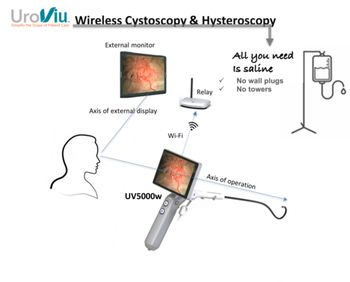
Branding your practice starts from inside
What does it take to achieve a high level of brand equity? Focus, hard work and consistency.
What does it take to achieve this level of brand equity? Focus, hard work, and consistency.
Of course, building and reinforcing a brand for a tangible product is less complex than building and reinforcing a brand for a service, such as providing healthcare. For primary care practices, branding is exceedingly more complex and is affected by factors as seemingly innocuous as the tone of voice of the receptionist answering the phone, the color of the office's walls and carpet, and the comfort of the chairs in the waiting room.
Jeff Rechler, a branding consultant with Braithwaite Communications in Philadelphia, Pennsylvania, says, "All too often, marketers wrap up their company brand in their graphic identity-their logo, Web site, presentation materials, product packaging, etc.-and stop there." For a brand to endure, Rechler says, it must be "easily understood, internalized, and acted on by employees at all levels."
Put another way, words must match deeds. It's not enough to tout that you're patient-oriented, says Ann Maloley, MBA, a lead consultant with Barlow/McCarthy Hospital Physician Solutions in Omaha, Nebraska. A practice that claims to be patient-oriented, but then leaves patients on hold for 2 minutes as they attempt to make an appointment isn't living up to its brand claim.
FIRST THINGS FIRST: WHAT IS THE BRAND?
One of the first steps in aligning employees with the practice brand is conveying to them what the brand really means, Maloley says. Most practices have an opportunity to help staff understand the brand and what it means in very concrete ways, she says. So if the practice says that extraordinary care is its key brand attribute, what does this mean in terms of a day-to-day perspective? What actions will employees exhibit to reflect this brand? How and what will they communicate?
"The brand needs to be broken down into very real and manageable terms for practice staff," Maloley says. "To say you're patient-focused or to say you provide extraordinary care or exceptional service doesn't mean a whole lot to staff unless they can see it in what they do day to day."
Employees can play an important role in making the brand "real" to the patients and family members they encounter every day. They have, in addition, the opportunity to play an important brand ambassador role as they interact with people in their personal lives-friends, family, neighbors, etc.
Brand ambassadors are "employees or customers who are advocates for a company and its products or services," says Gerard Corbett, chair-elect of the Public Relations Society of America. Corbett has more than 30 years' experience leading branding and marketing efforts for Fortune 500 companies. Advocacy works both ways, he says.
"You want employees to advocate for the practice and its services, but you also want employees to advocate for the patients. If you trust your employees and allow them to be your ambassadors, that can do a whole lot for the brand," he says.
Chances are you understand already the brand concept and your employees' effect on it, Maloley says. You know that employees are the access point of service, answering patients' phone calls, and being the first to see patients when they come to your office.
Knowing employees' role in branding gives you the opportunity to understand what the key access and service differentiators are for a good brand, Maloley says. "What does exceptional clinical expertise mean? What does extraordinary care mean?"
Newsletter
Stay informed and empowered with Medical Economics enewsletter, delivering expert insights, financial strategies, practice management tips and technology trends — tailored for today’s physicians.



















